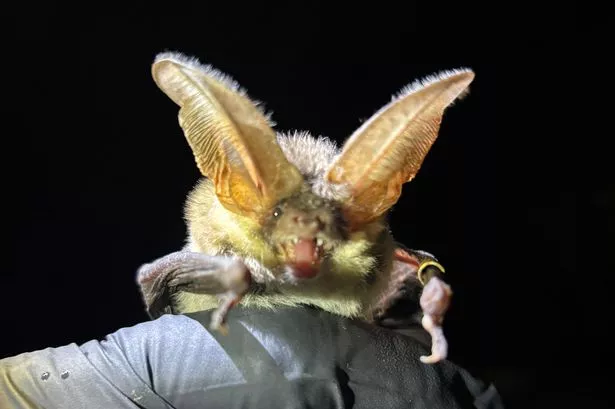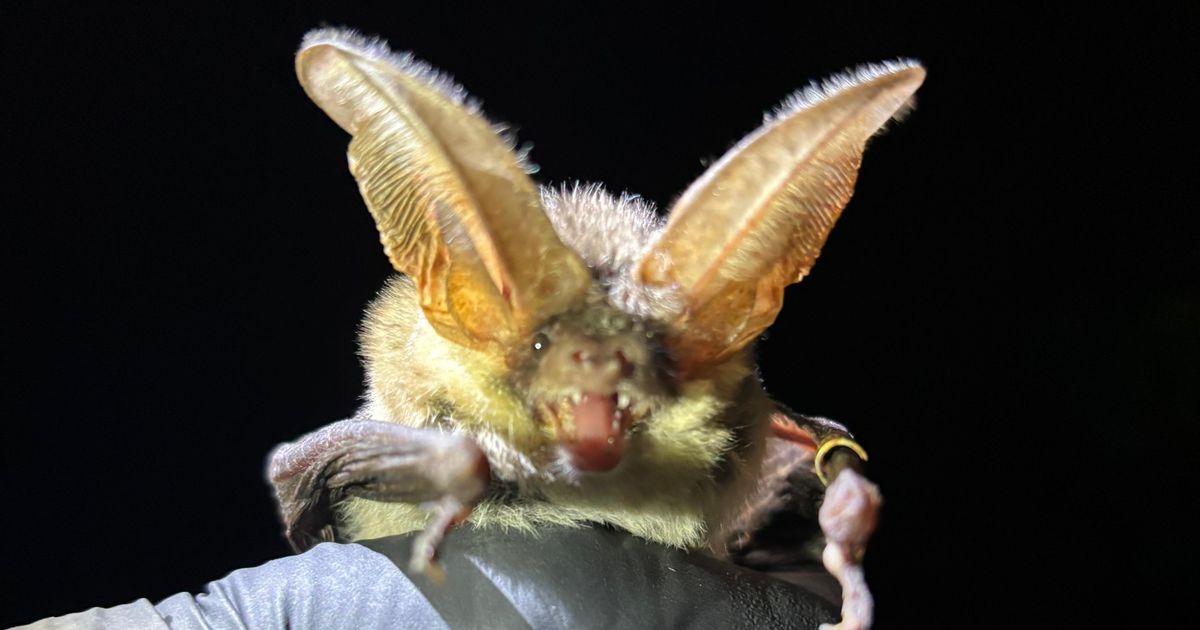It’s one of Britain’s rarest mammals A grey long-eared bat – one of the UK’s rarest mammals – is held under licence by a trained expert at Seaton Wetlands after being caught in a harp trap as part of a research study.
A grey long-eared bat – one of the UK’s rarest mammals – is held under licence by a trained expert at Seaton Wetlands after being caught in a harp trap as part of a research study.
A bat walk at a Devon nature reserve has led to the discovery of one of Britain’s rarest mammals – the elusive grey long-eared bat.
The species, which numbers fewer than 1,000 individuals in the UK, was recorded at Seaton Wetlands after an evening event led by the East Devon District Council Countryside Team. It is only the second confirmed sighting at the site, with the last recorded in 2013.
Following the public event, nature reserves ranger Ben Morgan-Brown joined Professor Fiona Mathews, an international bat expert, for further trapping as part of a migration study focused on Nathusius’ pipistrelle. Although they were unable to capture the target species, a female grey long-eared bat was unexpectedly caught in one of Fiona’s harp traps.
Recognisable by its unusually large ears and distinct from its brown long-eared cousin by features such as thumb size, the grey long-eared bat requires specific conditions to survive – ones that are increasingly rare in the UK.
Seaton Wetlands, along with small patches of nearby farmland, offers the ideal environment. Its species-rich wet grassland supports the moths, crane flies and midges the bats depend on for food.
So far, 14 of Devon’s 16 bat species have been recorded at the site, including other rarities like Bechstein’s, greater horseshoe and barbastelle bats.
Councillor Richard Jefferies, portfolio holder for environment – nature and climate, said: “To find a grey long-eared bat at Seaton Wetlands is a fantastic accolade for the district and demonstrates the remarkable work the East Devon District Council Countryside Team undertake to support wildlife restoration and conservation at each of our nature reserves.”
Professor Fiona Mathews, chair of Mammal Conservation Europe, added: “Bats are a vital part of our native wildlife. They are an indicator species, meaning their presence tells us a lot about the health of the environment. The diversity of bats at Seaton Wetlands is a strong sign of a thriving and healthy ecosystem, not just for bats but for a wide range of other wildlife and its fantastic to find a grey long-eared bat at the reserve for the second time.”
Ben Morgan-Brown said: “As I train towards my bat licence I’ve been lucky enough to encounter several rare species, but nothing will beat the moment I realised we were extracting a grey long-eared bat from the harp trap. To be able to handle and inspect such a rare species under Fiona’s supervision is an experience I’ll never forget.”
Further information about the East Devon District Council Countryside Team and their upcoming bat walk events is available at wildeastdevon.co.uk.
